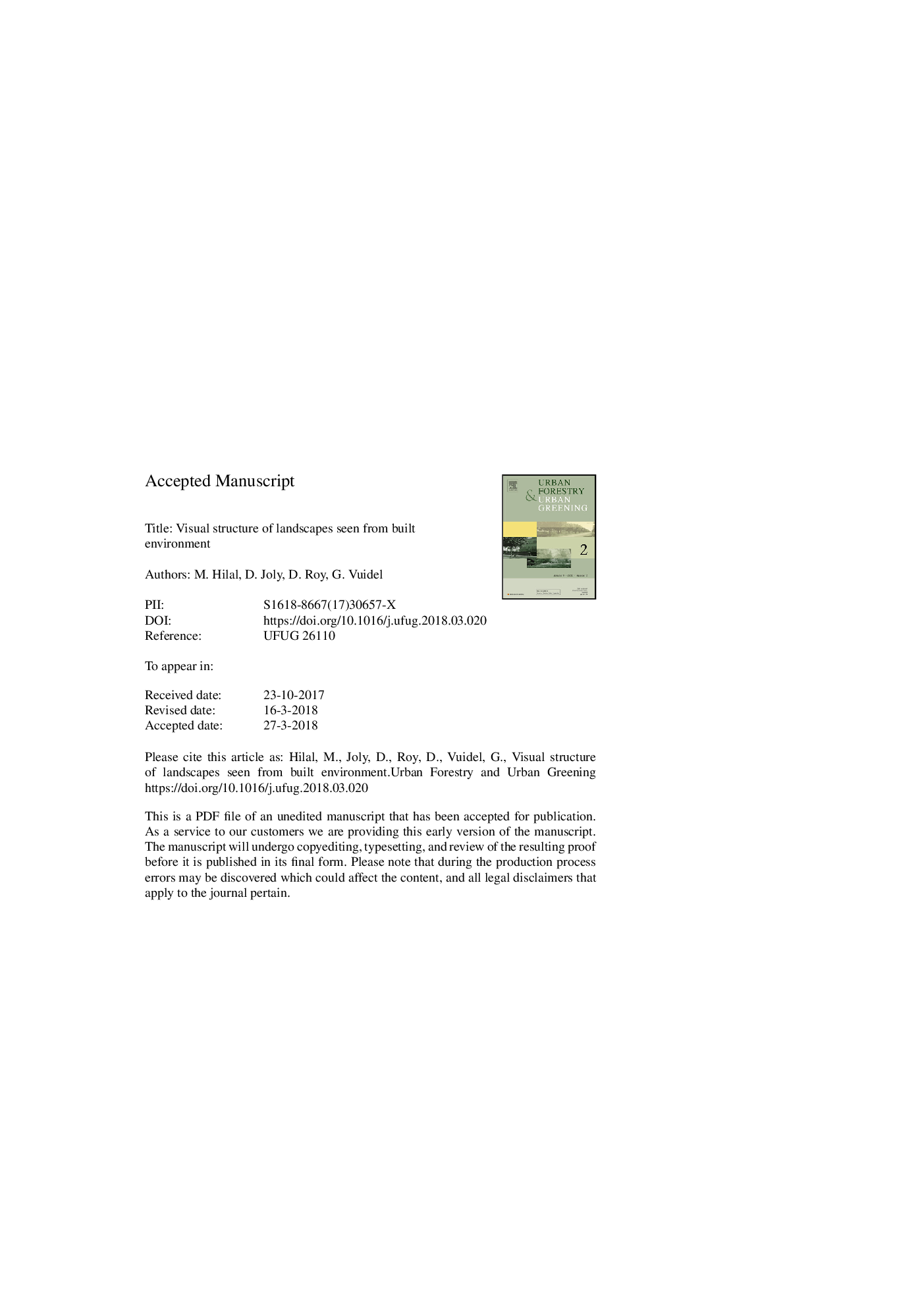| Article ID | Journal | Published Year | Pages | File Type |
|---|---|---|---|---|
| 6549183 | Urban Forestry & Urban Greening | 2018 | 24 Pages |
Abstract
Vegetation in cities keeps climate warming down and improves the health of people and ecosystems while making for a pleasant urban setting. Contemporary urban planning promotes sustainable green cities. Green and blue infrastructures, which help maintain an eco-friendly environment, are the primary instruments of this movement. This paper attempts to show the relative weight of plant life (trees, grass, orchards, etc.) seen from buildings in different urban settings (local urban patterns of high or low density of buildings). Landscapes open to view are identified by combining a digital elevation model and an 11-class land-use layer (including buildings, facilities, grey infrastructures, green and blue surfaces) in a computational tool that calculates viewsheds. The results show that vegetation is very much present in urban landscapes. In high-density built areas of city centres, the landscape is varied although not open and is dominated by trees, low-rise residential buildings and grass. Grey infrastructures and bushes are also very common. In low-density built areas the rank order of objects in view is similar but the landscape is more panoramic.
Related Topics
Life Sciences
Agricultural and Biological Sciences
Forestry
Authors
M. Hilal, D. Joly, D. Roy, G. Vuidel,
